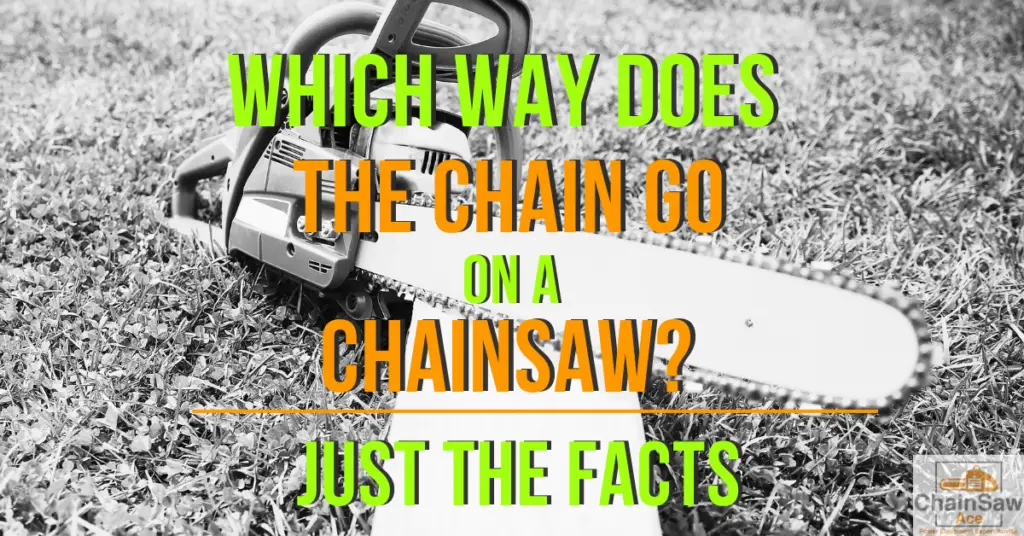
Ready to take your chainsaw skills to the next level? Properly installing and maintaining your chainsaw chain is a must for safe and efficient operation. Fear not; we’ve got you covered!
In this article, we’ll guide you step-by-step on identifying the correct chain direction and installing it like a pro on your trusty chainsaw. Let’s get started!”
What is the correct direction to install a chainsaw chain?
For correct chainsaw chain installation, ensure the cutting edge of each tooth faces away from the chainsaw and operator, pointing towards the guide bar’s tip along the top of the guide bar.
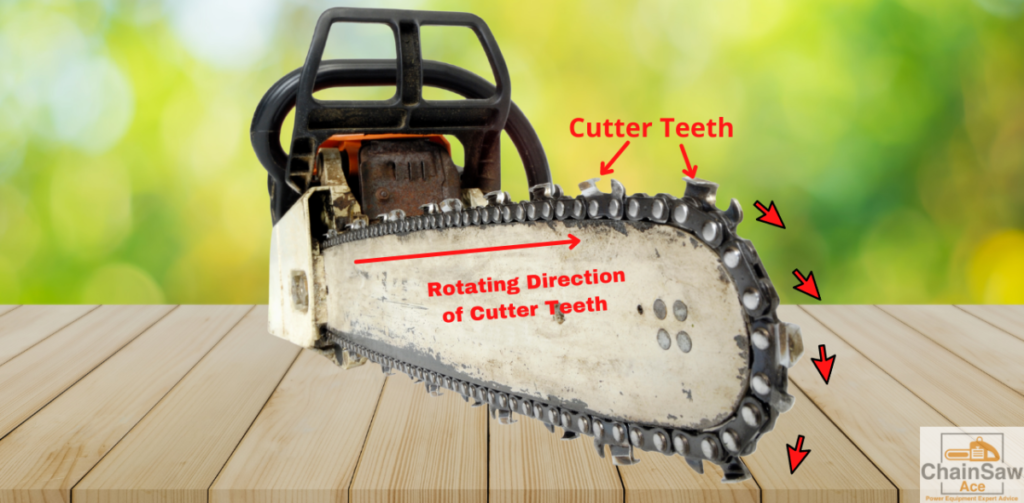
Additionally, we’ll cover some basic chainsaw maintenance tips to keep your chainsaw running smoothly.
Understanding Chainsaw Components
Before diving into chain installation, it’s important to understand the main components of a chainsaw that interact with the chain.
Chainsaw Chain
The chainsaw chain consists of a series of linked components, including cutter teeth and drive links. The cutter teeth are responsible for cutting through wood, while the drive links help the chain grip onto the guide bar and drive sprocket.
Guide Bar
The guide bar is the elongated metal piece that the chain wraps around. It guides the chain and maintains stability during cutting operations.
Drive Sprocket
Located near the chainsaw’s engine, the drive sprocket is a toothed wheel that engages with the chain’s drive links, propelling the chain around the guide bar.
Determining Chain Direction
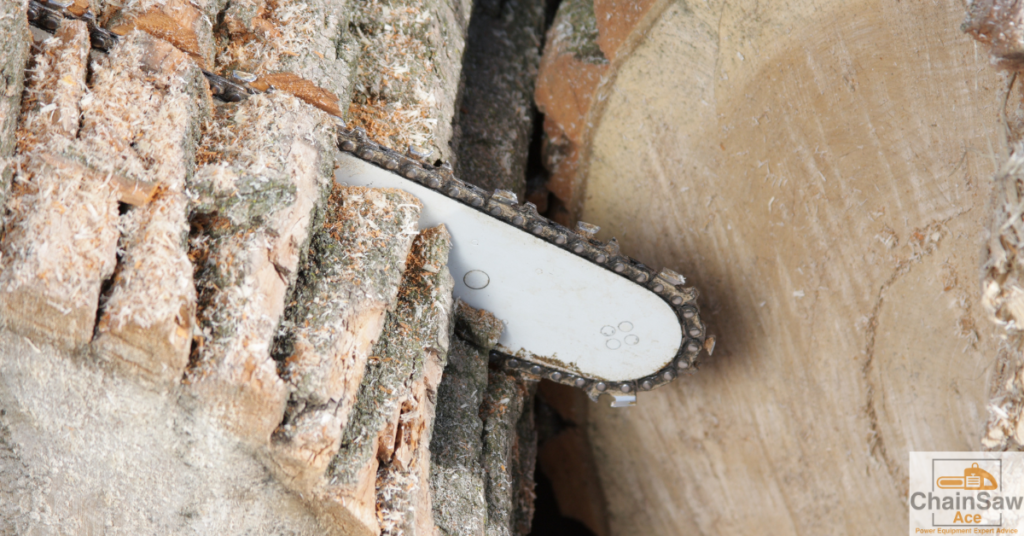
To install the chain correctly, you need to know which way it should face.
Cutter Teeth
The cutter teeth on a chainsaw chain have a specific orientation. They alternate direction, with one tooth facing left and the next facing right.
The cutting edge of each tooth should face away from the chainsaw’s motor and towards the nose of the guide bar. This ensures that the chain cuts into the wood as it moves forward.
Drive Links
Drive links are the flat bottom parts of the chain that fit into the guide bar’s groove. These links should face the drive sprocket, ensuring proper engagement and movement.
Installing the Chainsaw Chain Correctly
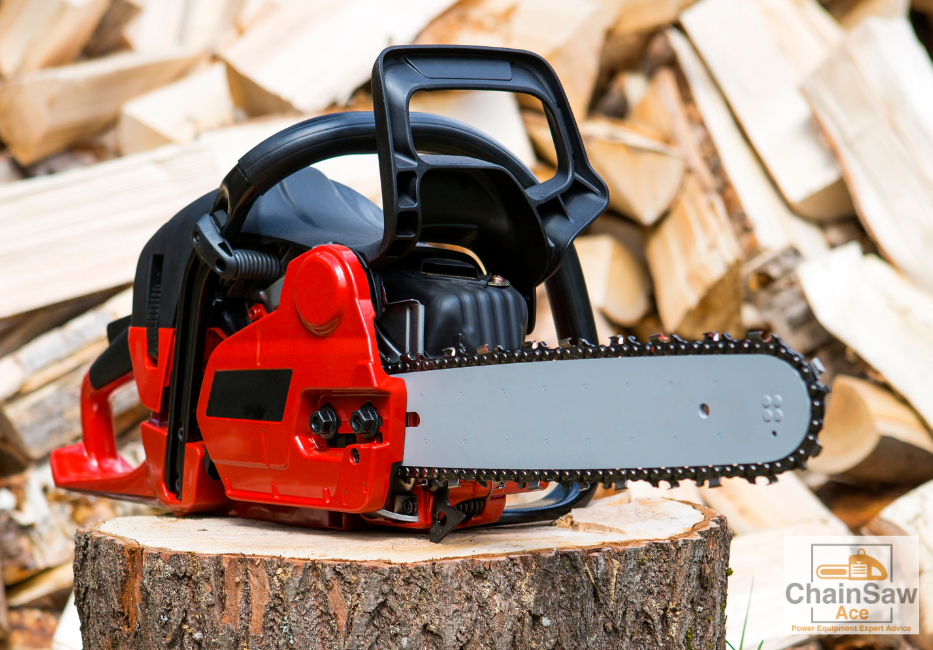
Now that you know the chain’s correct orientation, you can install it on your chainsaw.
Preparing the Chainsaw
First, ensure the chainsaw is turned off, and the spark plug is disconnected to prevent accidental starting. Remove the clutch cover, which is typically held in place by two nuts or clips.
Aligning the Chain
Place the chain around the guide bar, ensuring the drive links engage with the drive sprocket and the cutter teeth face the correct direction. Wrap the chain around the guide bar, ensuring it fits snugly within the groove.
Tensioning the Chain
Reattach the clutch cover and tighten the nuts or clips. Adjust the chain tension using the tensioning screw, which is typically located near the base of the guide bar.
The chain should have a slight amount of play but not sag or bind on the guide bar.
Maintaining Your Chainsaw Chain
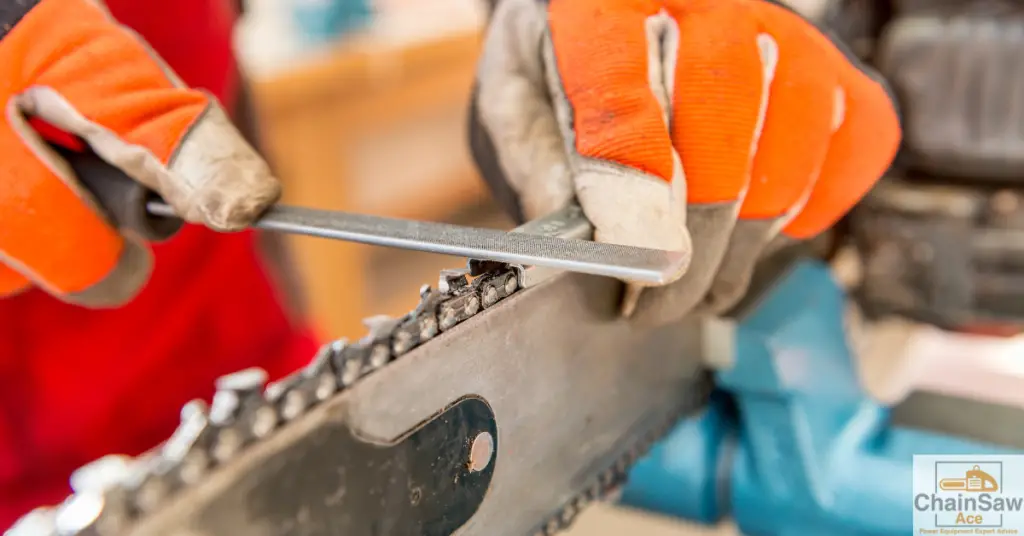
Regular maintenance is essential for your chainsaw chain’s optimal performance and longevity.
Sharpening the Chain
Over time, the cutter teeth on the chain will become dull. Sharpening the teeth with a round file or a specialized chainsaw sharpener will help maintain cutting efficiency.
Follow the manufacturer’s guidelines for sharpening angles and techniques.
Replacing a Worn Chain
If the chain is excessively worn or damaged, it may need to be replaced. Consult your chainsaw’s user manual to determine the correct replacement chain size and type.
To replace the chain, follow the same steps as installing a new chain.
Wrapping Up
Correctly installing the chain on a chainsaw is crucial for safe and efficient operation. Understanding the chainsaw’s components, determining the chain’s correct orientation, and following proper installation procedures will ensure a well-functioning chainsaw.
Regular maintenance, such as sharpening the chain and replacing worn chains, will also contribute to the longevity and performance of your tool.
Thanks for reading. Have a happy and safe out there with your chainsaws.
Steven R
FAQs
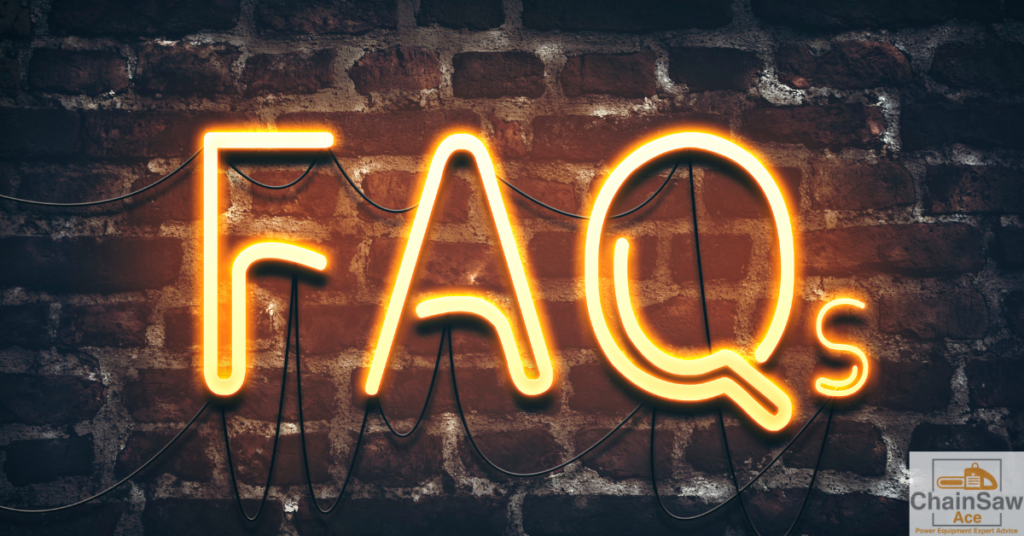
Can I use any chain on my chainsaw?
No, you must use a chain that is specifically designed for your chainsaw’s guide bar and drive sprocket. Consult your user manual for information on the correct chain size and type.
How do I know if my chain needs sharpening?
If your chainsaw is no longer cutting efficiently or if it produces fine sawdust instead of wood chips, it may be time to sharpen the chain. Regularly inspect the cutter teeth for signs of wear or damage.
How often should I sharpen my chainsaw chain?
The frequency of sharpening depends on usage and the type of wood you are cutting. A general rule of thumb is to sharpen the chain every time you refill the fuel tank or after several hours of use.
How do I know when it’s time to replace my chainsaw chain?
If the chain has excessive wear, broken or missing teeth, or if it no longer maintains proper tension, it’s time to replace it. Always use a replacement chain that is compatible with your chainsaw model.
Can I reverse the direction of my chainsaw chain to prolong its life?
No, reversing the chain’s direction is not recommended, as it can cause damage to the chainsaw and increase the risk of accidents. Proper maintenance and timely replacement of worn chains are the best ways to prolong the chain’s life.

